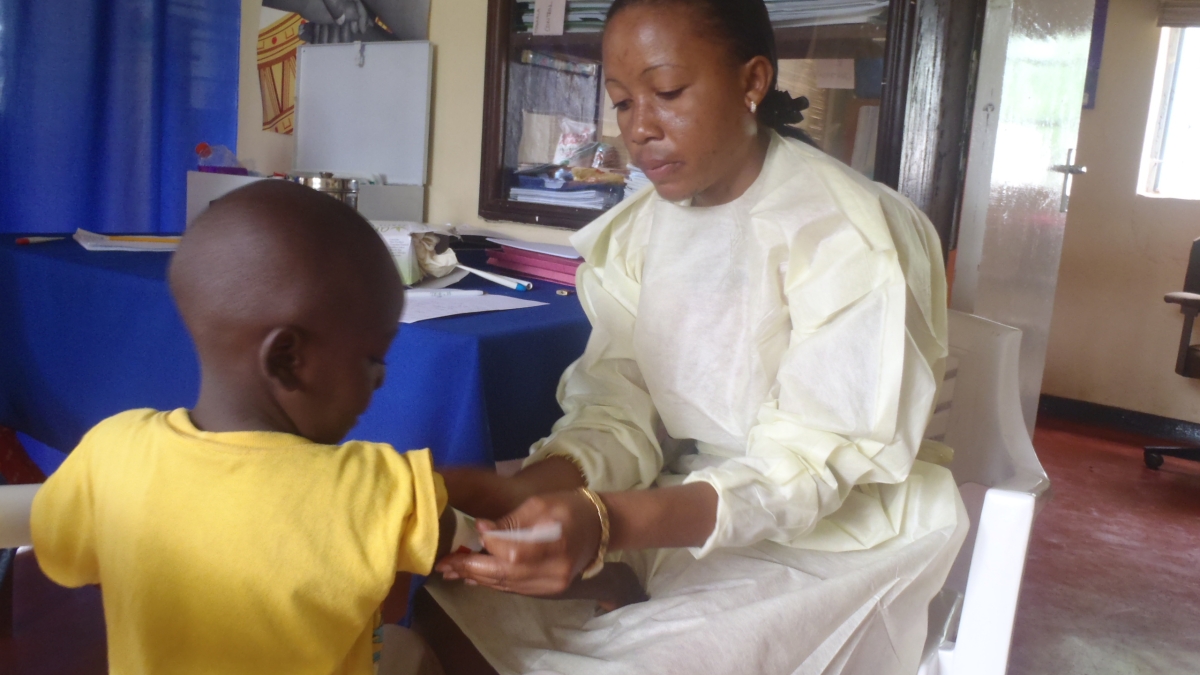For underserved communities, quality care comes by way of nurses

Editor's note: This story was originally published by ASU's Office of Knowledge Enterprise Development. Read the full version here.
Worldwide, nurses greatly outnumber doctors as providers of health care – often having the most extensive reach and intensive proximity to underserved communities.
Delivering quality health care to remote regions around the world, nurses play a critical role not only in providing surveillance on emerging diseases, but also in connecting patients with a new culture of care and serving as a voice for the socially marginalized.
The nurses who operate out of the health care clinic called Dzilth-Na-O-Dith-Hle (Navajo for "The Mountain That Turns Around"), run by Indian Health Services, are no different.
Near the Chaco Canyon on the eastern edge of the Navajo Reservation in New Mexico, the nurses at the DZ Clinic serve roughly 19,000 patients – many of them members of the Navajo Nation – and are more likely to commit to staying and providing consistent care than the physicians who rotate in and out, says David Hodgins, a doctoral student in ASU’s College of Nursing and Health Care Innovation.
Hodgins, who is also the director of nursing services at the clinic, spoke recently in Nashville, Tennessee, at the international symposium, “Nursing Leadership in Global Health,” which focused on the need for increased advocacy and leadership by nurses who work among the disenfranchised both domestically and globally.
Social embeddedness
Translating medical terms into Navajo – and inspiring trust – is not so easy, says Hodgins, who is half-Navajo and has dedicated his career to helping Native Americans from a variety of tribes.
“If I say to a patient, ‘You have diabetes and if you don’t take care of it, you will lose your feet,’ the patient may translate that as: ‘I’m sick and if I don’t do what he says, sooner or later he’ll cut my foot off.’ So they often interpret what we say in a very personal way, rather than in the clinical way we mean.”
As part of his dissertation research, Hodgins is developing a new set of metrics to measure physical activity among geriatric Navajo patients, all within the context of traditional cultural mores. Working under the mentorship of ASU Regents’ Professor Colleen Keller, Hodgins is taking into account 21st century factors of longer life expectancy and the attendant rise in chronic conditions.
“From the position of ASU, and from an education standpoint, it is absolutely critical that we produce more Native American nursing scholars who are embedded in their communities and willing to stay in their communities to work,” Keller says.
Nursing leadership
“The nurse is the custodian of people’s health and the well-being of the whole community,” said Susan Kaburu, a nurse and midwife at Samaria Health Centre in the forested region of Ndathi, Kenya, who attended the symposium.
Kaburu was among many nursing leaders who came to Tennessee with a unified message – that when it comes to serving marginalized patient populations, nurses are working on the frontlines, often alone.
Because of their unique role as the vanguards of prevention, treatment and compassion, it therefore makes sense to invite nurses into the policymaking process, according to Sheila Davis, chief nursing officer at Partners in Health, a global non-governmental organization.
Davis says many frustrations in health care delivery arise when nurses, who are working in the field, are required to implement programs from policymakers far upstream and removed from patient care. This creates a self-perpetuating dysfunctional system, she says.
Her solution is “whoever is closest to the patient gets the most say.”
As health providers gain experience dealing with issues within in their own communities, Hodgins says, they will be in the best position to translate that information to other vulnerable populations around the world – creating a more cohesive system of care.
ASU's PhD in Nursing & Healthcare Innovation helps students develop advanced leadership skills in innovation, research, education, health care delivery and policy issues. Learn more about the program.
Written by: Lisa A. DuBois